Baseballs, basketballs, footballs (both kinds), tennis balls, golf balls, even hockey pucks (a version of the ball)…they each have their own unique history.
With most of these sports there is an equally important evolution of other equipment, most notably the items one uses to whack these balls around. Bats, sticks, clubs, shoes - they have all progressed along with the balls. For our purposes we’ll limit our discussion of those aspects.
The Baseball. The baseball has had many different versions, most notably before and after 1872 and 1911. Before 1872 they pretty much played with whatever they had on hand as long as it resembled a ball. The formation of professional leagues in the 1870's somewhat standardized the baseball at that time, although you wouldn't recognize the thing today. In 1911 baseball adopted a cork-center ball - offense and the game's popularity exploded.
Baseball evolved from various games, particularly Rounders, a variation of which was played in England, Germany, and possibly other places as early as the 16th century. In America, Rounders was called a variety of things including Town Ball in the early 1800's. The game was massively popular, and the locals turned out from miles around to watch the contests...
Not really. The first record of a game closely resembling baseball as we know to today is in 1829, although at that time there were some crazy rules like you ran the bases clockwise, they only played two or three innings in which everyone batted every inning, and a guy was out if you hit him with the ball. It's likely they just made the rules up for every game within a loose framework. Canada actually makes some claim to the first recorded account of a baseball game, in 1838, but that can't possibly be true. And even if it is I choose to ignore it. The earliest known newspaper account of a baseball game in the U.S. dates from 1845.
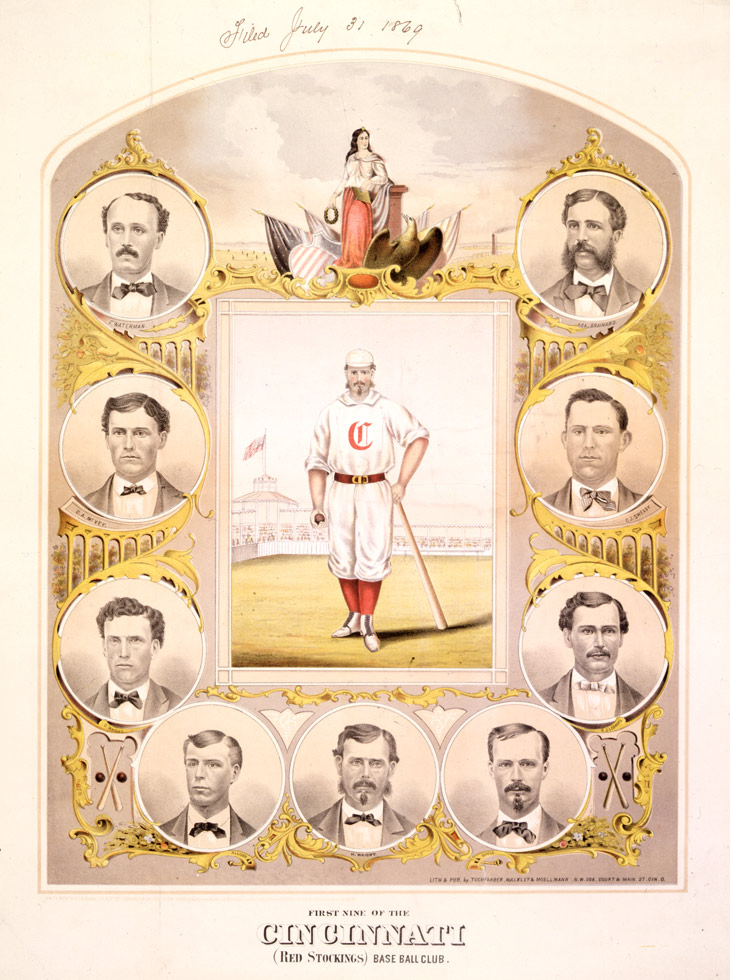 In 1869 Harry Wright got serious, found some sucker to pay the guys to play baseball, and the Cincinnati Red Stockings became the first "openly" professional baseball team (teams had paid players for years, but not all of them, and they didn't admit to doing it.) Before this time I guess it was a lot like watching your dad's rec softball team.
In 1869 Harry Wright got serious, found some sucker to pay the guys to play baseball, and the Cincinnati Red Stockings became the first "openly" professional baseball team (teams had paid players for years, but not all of them, and they didn't admit to doing it.) Before this time I guess it was a lot like watching your dad's rec softball team. The National Association of Professional Base Ball was formed in 1871 (not including, oddly, the Cincinnati team.) And thus, we have the first league set to give us our first rules concerning what we're here to discuss: the baseball.
But let's not jump ahead of ourselves. At this point there were teams all over the place and the National Association only lasted until 1875. Many of the teams didn't show up for games, left in the middle of them, and/or nobody bothered to show up and watch. That can happen when you have a team from Ft. Wayne, Indiana and another from Boston at a time when America's most popular form of transportation was still the horse.
Undaunted, in 1876 some guys with deep pockets and a love for balls and bats founded what remains today the National League (You wondered why it's called the senior circuit? That's why.) The only original teams still left in the NL are the Cincinnati Reds (Red Stockings) and the St. Louis Cardinals (Brown Stockings), although both teams left the NL for the American Association in 1882 to return later. The organization that spearheaded the formation of the National League is actually the team we know today as the Chicago White Sox. And, in truth, the White Sox could make a very hearty claim as the oldest consistent team - a claim the Reds make but is very shaky considering the facts.
So...the National League quickly became full of themselves and booted a few teams, including St. Louis (they may have just left) and Cincinnati (definitely booted), due to their 'lower moral standards'. [SOURCE] Cincinnati sold beer at their home games and all "river cities" were considered backwoods idiots unworthy of inclusion in their pristine league. The Philadelphia Athletics, an original NL team, also joined the American Association in 1882.
Thus the American Association was formed as a response to the NL's puritanical regime. At the end of the 1882 season Chicago (NL) and Cincinnati (AA), the two best teams of their respective leagues that year, split a two game series to end the season. Some consider this the first whiff of the World Series we know today.
A great quote to give you an idea of the times:
The National League appealed to more middle-class audiences by requiring its teams to charge fifty cents admission, banning the sale of alcohol, and refusing to play on Sundays. The rival American Association appealed to immigrant and working-class audiences by charging only a quarter, selling liquor and playing Sunday ball.[SOURCE]
From 1880, and even before, until about 1900-01 leagues formed, folded, teams switched leagues, changed names, disbanded, came back again with the same name, a new name...it was all complete chaos. If I were to attempt a full account of everything it would be Master’s Degree worthy. So I won’t.
Our original lineups once we made it to circa 1900-01:
NATIONAL LEAGUE
• Boston Beaneaters (Atlanta Braves)
• Brooklyn Superbas (Los Angeles Dodgers. This name is open to debate, as there was no ‘official’ nickname of the team until 1932 when it became the Dodgers. They were known as the Atlantics, Grays, Grooms, the Bridegrooms, the Superbas, and the Robins.)
• Chicago Orphans (Chicago Cubs. When the great Cap Anson left the team they were dubbed the Orphans. By 1902 they were the Cubs.)
• Cincinnati Reds
• New York Giants (San Francisco Giants)
• Philadelphia Phillies (first known as the Quakers as early as 1883)
• Pittsburgh Pirates
• St. Louis Perfectos (the Perfectos name lasted one year, 1899, before being changed to the Cardinals in 1900)
AMERICAN LEAGUE
• Boston Americans (Boston Red Sox)
• Baltimore Orioles (New York Yankees. Huh, you say? True. The Yankees were originally the Orioles, moved to New York in 1903 becoming the Highlanders, and were renamed the Yankees in 1913.)
• Chicago White Stockings (Chicago White Sox. In fact, it could be argued that the White Sox are the actually the oldest team in baseball, a title the Reds claim.)
• Cleveland Blues (Cleveland Indians)
• Detroit Tigers
• Milwaukee Brewers (Baltimore Orioles. Crazy eh? The Orioles became the Yankees and the Brewers became the Orioles. Go figure.)
• Philadelphia Athletics (Oakland Athletics)
• Washington Senators (Minnesota Twins. Curious? So was I. Different incarnations of the Senators have the dubious distinction of failing and birthing two current franchises – the Twins in 1960 and the Rangers in 1972.)
NOW THEN. I started this with the idea of discussing the actual baseball, not baseball as an organization. But I think the history of the game is important to see the progression the actual baseball. Plus, it’s my blog and I can do what I want.
What you see today, at least on the outside of the baseball, is very similar to what the baseball was in the late 1800's. You can actually purchase reproductions of early versions of the baseball HERE.
As mentioned earlier, for the most part the baseball was standardized in the 1870's. The ball in the picture at the beginning of this post is a pre-1872 ball. The figure eight design we know today was not adopted until 1872, although supposedly there were versions of it before then.
Harry Wright tried to kick-start offense in the game by introducing a cork-center ball instead of a rubber-center ball in 1880, but no one liked it (Well, no one playing defense liked it, which is understandable considering the gloves they used.) The cork-center ball would not be officially adopted until 1911.
Around 1920 they stopped (well, they tried) letting the pitchers do whatever they liked to the ball (scuffing, spitballs, etc.), and also began changing out used balls for new balls during the game. Thus, Baseball is split into the “Dead Ball Era” pre-1920, and pretty much what we have had up to the present day. If one looks at the just home run stats from this time, it's fairly obvious the impact. From 1901-1918 the American League high for HR's in a season was 16. In 1919 Babe Ruth hit 29, and followed that up with 54 in 1920. In the National League the all-time high for HR's was 27 from 1876 until 1921 (that's 53 years.) In 1922 Rogers Hornsby hit 42 homers, and from that point on the NL leader in HR's would hit 27 or more every year except two (21, Hack Wilson in 1926 and 23, Ralph Kiner in 1946.)
Around 1930 they changed from a cork to a “cushioned cork” center, and in 1974 there was a change from a horsehide to a cowhide cover. From what I can tell, the baseball has had those 108 stitches (each hand-stitched) at least since the 1920’s and probably before then - see the pictures from 1878 and 1889 above.
Whitey pointed out that should they change the stitching in any way the ball might be made to perform unnatural acts, and since Baseball is very keen on its history changes are highly unlikely. There was much discussion about MLB having done something to the ball in the late 1990’s/early 2000’s due to the meteoric rise in home runs. We now know something was done, but not to the ball.
For now, the baseball is #1 on the list of most consistent game balls still in use.
QUICK NOTE: I wanted to mention a few things concerning the recent bounty of perfect games in baseball and this discussion about the ball seems as good a place as any. There have been 20 perfect games in baseball history, the first of which was recorded in 1880. If we begin there that's a span of 130 years, meaning baseball has averaged one perfect game every six and a half years for 130 years
The National League actually had two perfect games in 1880...and didn't have another one for 84 years. The American League's longest drought was from 1922-1956. The 19 teens (?), 1930's, 1940's, and 1970's saw zero perfect games.
In the past ten years we have seen four perfect games (should be five, but so be it.) The previous high was three in the 1960's, maybe a contributing factor (along with Bob Gibson) to the lowering of the mound. In the past twenty years we have seen eight perfect games. But in the past 30 years, since 1980, there have been 11 perfect games. So, for the first 100 years (actually more, but I won't nit-pick here) of baseball there were nine, that's right, nine perfect games. 55% of MLB's perfect games have been thrown in the past 30 years.
We could talk explanations for this til the cows come home. One of my top reasons would be the expanding number of teams, but the equipment has changed, technology has made scouting better, new pitches come along (remember Mike Scott, Roger Craig, and the split-fingered fastball hype?) The list can go on and on. But the ball...the cowhide...who knows...
Good references:
For exact dimensions and stats of the ball go HERE.
For a good early history of the baseball and other equipment go HERE.


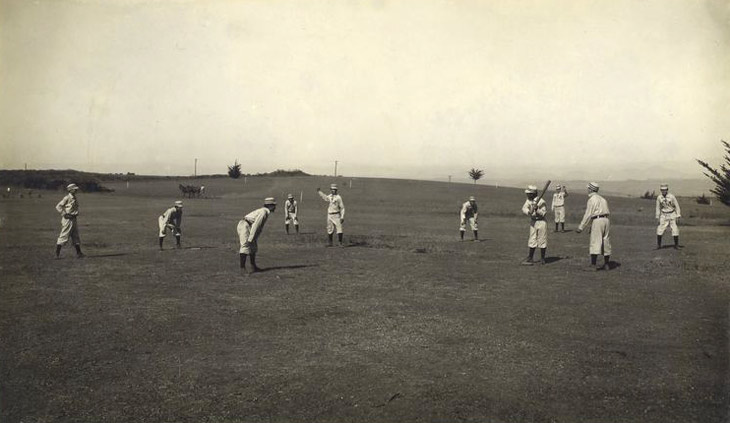
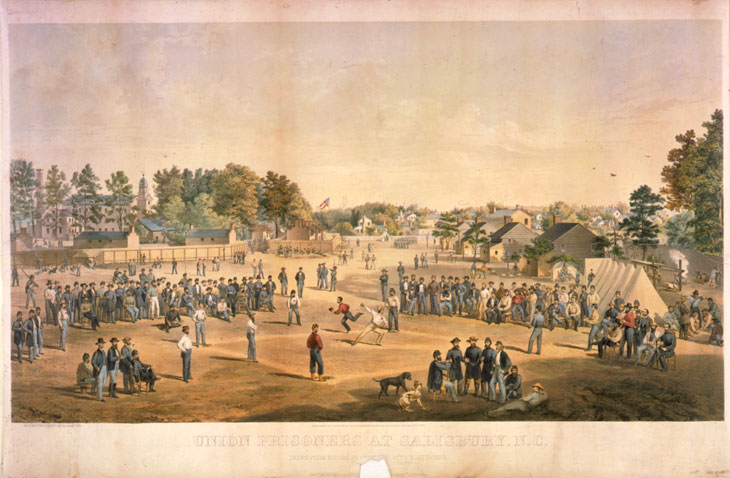
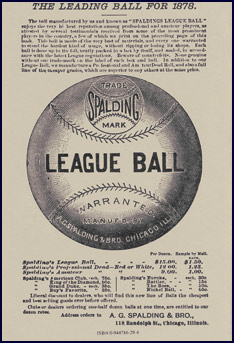

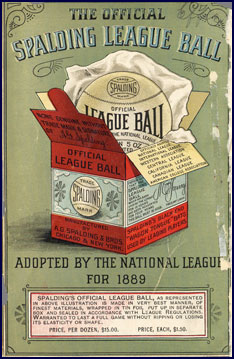
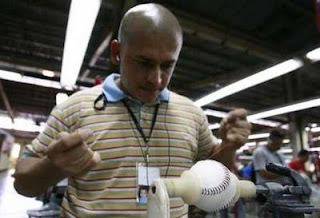










No comments:
Post a Comment